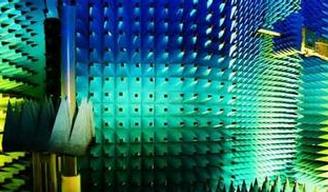
The Schott Electronic Packaging Business Unit in Germany and Tesat-Spacecom, a German satellite communications system and equipment manufacturer, have collaborated on the development of sealed enclosures for aerospace applications and have been used in ESA's micro Earth observation satellites since May of this year. Proba-V.
This case was first used for packaging using a gallium nitride (GaN) power amplifier monolithic millimeter-wave integrated circuit (MMIC) chip. Schott and Tesat-Spacecom of Germany have developed the most suitable materials and geometries for encapsulating heat sinks in the package, and sealed high-temperature co-fired ceramic (HTCC) multilayer ceramic structures in the package as high-frequency channels. Minimize insertion loss and reflected high frequency waves.
Proba-V's communication system weighs approximately 140 kg and has a volume of 1m3. It includes a GaN-based special microwave amplifier (first used for European satellites) and can be used to transmit photos at an altitude of 800 km and X-band (8 GHz) to monitor the Earth. Vegetation. SCHOTT estimates that GaN can increase signal strength and data transmission capabilities by 5 to 10 times and will serve as a high-performance material for communication systems. SCHOTT added that the effective range of the MMIC amplifier's surface transfer performance is only a few square millimeters, so it requires a new type of packaging.
The MMIC amplifier chip was installed in a sealed package jointly developed by Schott and Tesat-Spacecom. Due to the ceramic-to-metal path design, high frequency waves can penetrate the shell wall with very low attenuation, thus minimizing power consumption (insertion loss) and reflection losses.
Thomas Zetterer, Schott Electronic Packaging R&D Engineer, said: “Through the close cooperation of electromagnetic wave simulation and manufacturing, we have provided the best geometry and design for this special path.”
The second characteristic of the package is the high thermal conductivity of the bottom plate, which effectively releases the heat generated inside the MMIC amplifier. To do this, Schott and Tesat-Spacecom's R&D team studied the best material and geometry for the heat sink. The company stated that the next step will continue to study materials that can provide higher thermal efficiency and test in higher microwave power applications.
Eberhard Mss, Team Leader of Tesat-Spacecom, commented that “cooperating with SCHOTT makes it possible for us to obtain the high thermal conductivity package that is urgently required for future GaN amplifiers.”

 The Schott Electronic Packaging Business Unit in Germany and Tesat-Spacecom, a German satellite communications system and equipment manufacturer, have collaborated on the development of sealed enclosures for aerospace applications and have been used in ESA's micro Earth observation satellites since May of this year. Proba-V.
The Schott Electronic Packaging Business Unit in Germany and Tesat-Spacecom, a German satellite communications system and equipment manufacturer, have collaborated on the development of sealed enclosures for aerospace applications and have been used in ESA's micro Earth observation satellites since May of this year. Proba-V. 
